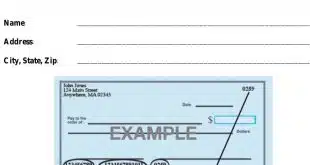In an effort to bring some order to the Wild West of person-to-person payments over the automated clearing house network, ACH governing body NACHA-The Electronic Payments Association is proposing a new credit version of its WEB code for online person-to-person payments that would include standardized formatting for the transactions.
Herndon, Va.-based NACHA is taking comments from the financial community about its proposal until Oct. 1. It issued the proposal Aug. 15. Plans call for a new rule implementing the proposal to take effect March 21, 2014.
NACHA has numerous standard entry class (SEC) codes for the various types of ACH payments, but none specifically addresses person-to-person payments, according to Mike Herd, managing director of ACH network rules. Banks, processors, and tech startups, however, are increasingly promoting P2P payments as online-banking programs and specialized software make paying other people using personal computers or mobile devices ever easier. “It looks like the adoption of that is happening, and it seems like the appropriate time to go out and make some rules,” Herd tells Digital Transactions News.
NACHA knows a number of P2P transactions already are flowing through its network, but Herd says the actual volume can’t be easily discerned. Such transactions typically use bill-pay codes, and if a third-party processor is involved, as is frequently the case, one payment may be split into two transactions, one debiting funds from the sender’s account and the second crediting them to the recipient’s account.
A standard entry class code specifically designed for P2P payments would give NACHA a better read on volume and enable it to set formatting standards so that originating depository financial institutions (ODFIs) and receiving depository financial institutions (RDFIs) can easily send and receive the items, according to Herd. To do that ,NACHA considered several alternatives, including the creation of an entirely new SEC code. That idea didn’t fly.
“As a general matter over the years, the trend for proposals that we make and have gotten feedback is that a new SEC code [is] the most expensive in terms of system implementation and cost,” says Herd.
Thus, NACHA set about determining which of its existing codes could be adapted for P2P. The two main candidates were CIE, for customer-initiated entry, and WEB, a fast-growing code for Internet bill payments and mobile ACH payments. CIE is a credit transaction in which the originator directs his bank to “push” funds to another party. WEB is a debit transaction in which the originator requests funds from an account but does not have confirmation that the money actually is there.
A CIE transaction, while slightly less risky than a WEB one, has some drawbacks for P2P payments, however. “It’s really designed around paying a bill … and giving information about the consumer’s account with the biller,” says Herd.
Instead, NACHA decided to modify WEB for P2P payments by introducing a credit version of the code. A WEB credit would enable financial institutions to easily identify, process, and track statistical data, according to NACHA’s executive summary of the plan. Processors already use WEB debits to fund P2P transactions under the split-payment model, so service providers could batch WEB credit and debits together for processing, NACHA says.
One issue in adapting WEB for P2P was changing criteria governing who can originate a transaction. With WEB debits, the originator typically is a company that has an agreement with a financial institution, and transactions have a number of risk-control features. But that system would be cumbersome for consumers who want to send a payment to another person. “Consumers today are not excluded from originating WEB debits, but they would have to be appropriately vetted, be treated like any other originator,” says Herd.
Instead, with senders and receivers of WEB credits being individuals, NACHA will not require authorization by the payment receiver, and there will be no warranty for such authorizations made by ODFIs.
Formatting standardization, meanwhile, will involve a number of elements regarding data and its presentation in the transaction message. “Standardization of the way the network works for P2P credits would lead to greater adoption,” says Herd.
Standardized formatting also will help recipients ascertain the sender of the funds, as required under Regulation E to the federal Electronic Fund Transfer Act. “When transactions are clearly identified, banks tend to get few customer-service calls,” says Herd, adding that clear IDs also will prevent some return ACH transactions.
A related aspect in the proposal would add an optional addenda record in the transaction, an electronic equivalent of the memo line on a paper check, which could carry further documentation in plain text or even a URL link to a Web site with added documentation.
The P2P rules effort stems from a process that started back in 2009 when NACHA requested comments about how to handle ACH payments from mobile devices and ultimately settled on WEB.




